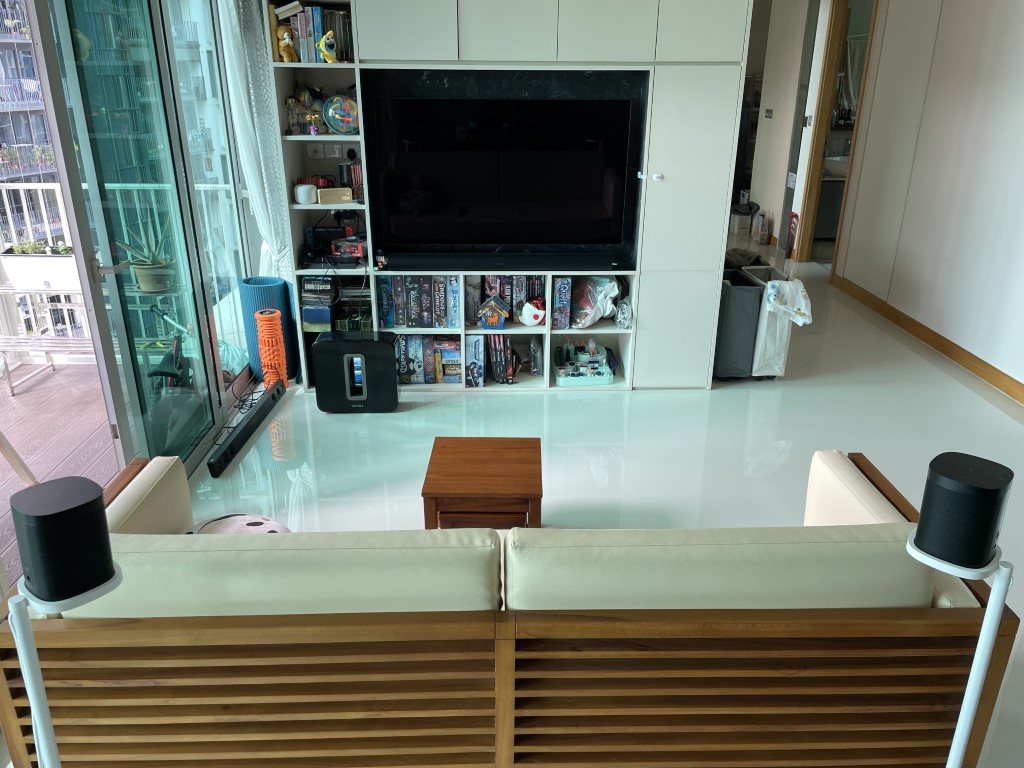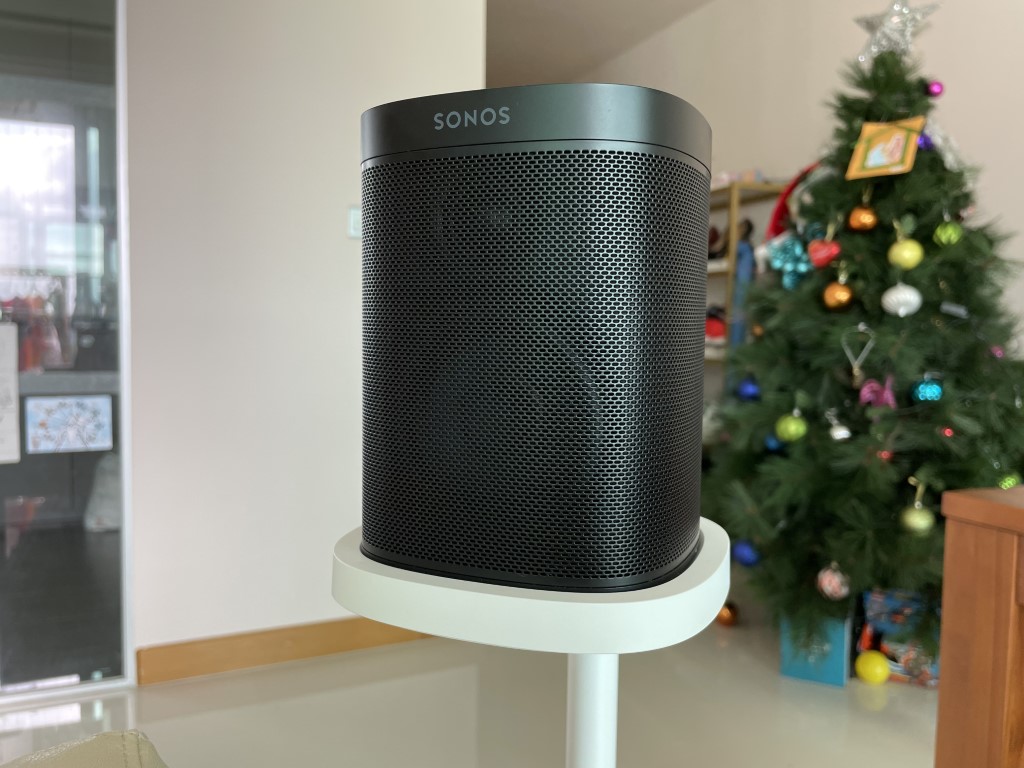Sonos Arc Surround Sound System: Form and functionality combined

The joyful sight of a full-fledged cinematic experience has been marred in the last two years, as the pandemic brought about new fears and limitations of catching a movie on the big screen. And while home theatres have long wanted to offer the same, it was only in recent years of big-screen TVs that this was possible.
And for every 75-inch TV, accompanied by the latest big-screen blockbuster made available on streaming services, there needs to be one more important component – a powerful audio system to match.
Enter the Sonos Arc Surround Sound System, which presents itself as a compelling choice for people dipping their toes into the Dolby Atmos home theatre experience. Convenience is a great draw here, as this offers rich-sounding audio without the need to fiddle with AV receivers, endless audio cables, or drilling holes into the ceiling.
Despite its name, the Sonos Arc Surround Sound System actually comprises three individual devices: the Sonos Arc soundbar, Sonos Sub (Gen 3), and two separate Sonos One speakers. The entire package tips the scale at 32kg, so a push trolley would prove handy if you’re looking to buy everything at one go.

The Sonos Arc soundbar comes in a box with interesting plastic locks on both ends that held the box’s cover firmly in place. This was a minor design detail but it gave an impression that Sonos puts extra effort in the things they make.
Lift the covers off, and users will be greeted with a soundbar wrapped in cloth, with no low-quality plastic wrap in sight. The power cord is also surprisingly well-designed, connecting to the soundbar with a satisfyingly smooth click.
Set-up is done primarily via the Sonos app, and Wi-Fi pairing proved to be a smooth affair. The wireless nature of this system also makes it easy to place the subwoofer and surround speakers anywhere in the living room without having to hook them up to one another.

Connection to the television, in contrast, required a little bit more work, as certain settings had to be toggled before sound could be played through the Sonos. The most important thing is that a HDMI connection is needed to connect this to your TV, and note that an ARC or eARC HDMI port needs to be freed up for Dolby Atmos support, or you won’t hear anything.



For this review, the Sonos Arc soundbar was placed just below the television and positioned slightly forward. This is to prevent the bottom of the television from blocking the sound waves of the upward-firing speakers.
The Sonos subwoofer was positioned just below the soundbar, but away from the corner of the room to avoid unnecessary reverberation. Meanwhile, the Sonos Ones, which were used as surround speakers, produced good quality audio 1.5 metres from the listening position at a 30-degree angle. These were all connected wirelessly, so no living overhaul was needed!
Like most home theatre systems on the market, the Sonos Arc Surround Sound System also requires some form of tuning and adjustment. Poorly-tuned speakers and subwoofers can distract viewers from what should be an immersive watch, but thankfully for the inexperienced, the Sonos app has kept the process beginner-friendly with its Trueplay function.
This is how it works: fire up the app, and you’ll be asked to wave your iPhone around the room while the speakers play a series of blips and tweets. The device’s microphone will then pick up these sounds, allowing Trueplay to adjust the speakers’ settings accordingly.
The entire process takes less than three minutes, but it’s amazing what waving your phone around your house can do for your acoustics. Here’s a quick tip – to get the most out of the feature, concentrate on waving the phone around your listening position rather than pacing around the space. Oh, and make sure you switch off your fans/air-conditioners and get the kids to stay quiet.

When put through its paces, the sound system impressed with its audio prowess with the below-mentioned Dolby Atmos supported content. The surround speakers were convincing in tracking flying objects on-screen during the epic final showdown in Avengers: Endgame, most notably Thanos’ blade that was thrown in an arc before returning to its owner.
Elsewhere, the Sonos Sub excelled during the scene where Thanos commanded his ship to rain down artillery fire. Here, the bass was filled out robustly, with thumping explosions cutting through the space as one would experience in an actual cinema.
More prominently, the dialogue was observed to be crisp and clear despite the hectic action and loud booming, which is already an admirable feat in itself. Turning down the volume doesn’t change things either, so viewers will be able to still enjoy the character interaction without fear of waking their loved ones or neighbours up.
The performance of the Sonos Arc Surround Sound System doesn’t let up with Disney-Pixar’s Soul. The movie’s rich, jazzy tones were captured perfectly, with the sound-mixing proving to be extremely pleasing on the ears. Each instrument in the ensemble during Joe Gardner’s audition scene could be distinguished clearly, and this was, well, instrumental (heh) in pulling viewers into the scene.

From an intimate jazz bar setting, we moved on to testing the Sonos with Queen’s Bohemian Rhapsody which supported 5.1 surround sound, specifically the final sequence performance at Wembley. The best showcase of the system’s capabilities was when Freddie led the crowd in the back-and-forth ‘eh-ohs’, which gave off the sense of a real-life stage performance.
Alas, having upward-firing speakers bounce sound from the ceiling to your listening position comes with limitations. The Dolby Atmos effect isn’t as jaw-dropping as the other aspects of this system:
The overhead sounds appear to be blink-and-you’ll-miss-it, or are at times muddied with audio coming from the surround speakers. In instances where action overhead is prolonged, the presence of a height channel is more pronounced, but such action sequences are few and far in between for the movies tested with the Sonos system.
Outside of entertainment, the sound system pairs well with Google Assistant or Amazon Alexa. Major music services like YouTube Music, Spotify and Tidal are easily controlled using voice activation and can be swiftly added to the app without much fuss. The app is straightforward to use and can be navigated smoothly as well. The app also allows you manually tune the EQ levels of individual speakers.

The Sonos One speakers that are used as the surrounds can also double up as dedicated voice-activated speakers in another space, which is certainly a plus point. However, do note that shifting it from room to room requires you to swap the speaker profile between a room speaker and surround speaker, so it could be troublesome if you’re doing it on a daily basis.
At $3,546, the Sonos Arc Surround Sound System is a hefty investment compared with other Dolby Atmos set-ups from big box brands. It has rich sounds, capable Dolby surround treatment, and clear dialogue handling that can rival some dedicated audiophile home theatre setups.
And if you’re hunting for a sound system to add to your living room’s aesthetic appeal, you can’t go wrong with the Sonos. So for a package that possesses both form and function, the Sonos wouldn’t be a bad bet.
The Sonos Arc Surround Sound System does come at a premium compared to the competition. But since there is no need to overhaul the living room, it might make it worth the price of entry.
This article was first published in Geek Culture.